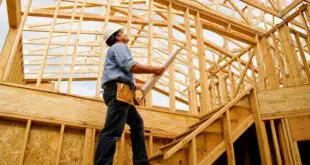
No one wants a damp home, and the only way to protect against it is to take adequate measures to stop it happening. Building a new home is one time when you have the ideal opportunity to take appropriate action and avoid need for potentially huge disruption later in the life of the property.
Building regulations require all new buildings to install suitable damp proofing measures and provide guidance on the use of damp proof course materials to prevent rising damp. Anyone contemplating a new home build will want most definitely want to take adequate measures to prevent damage from rising and penetrating damp and the investment in the best materials is money well spent.
Here, we look at how to ensure that you install adequate protection in a new build property to prevent rising damp from damaging floors and walls and give you a dry home for years to come.
Page Contents
Flooring
Your ground floor should have sufficient structural support and resistance to ground moisture and heat loss. To do this you should install a suitable damp proof membrane designed to prevent moisture reaching and penetrating through concrete slab flooring. The damp proof membrane should be laid on top of a suitable base and should join up with damp protection in the external walls, and basement if you have one, to work effectively. You will need to seal the membrane using good quality tape to walls and around any other intrusions such as pipes. Once your membrane is in place and secured you can lay your concrete flooring on top.
The damp proof membrane acts as a barrier to ensure that moisture does not penetrate through the concrete flooring and creep up walls. When no protective membrane is in place, you soon start to see the costly damage that damp causes. Damp poses huge potential health risks as it lets off spores that can seriously affect breathing. Damp will over time cause structural damage to the integrity of the building, when it comes into contact with woodwork and flooring these will rot or become displaced, wall plaster will also be damaged as the effects of moisture ingress increases.
Walls
Damp proof courses in walls should be at least 1.5cm above ground level where the wall is an external wall. All damp proofing within walls should join up with any damp proof course or membrane in the floor and it must be at least 2.25cm above the bottom cavity of wall cavities, unless a suitable cavity tray is installed.
Rising damp through walls will add to the condensation levels within the home and cause excess water on windows and soft furnishings, which is something you will certainly want to avoid.
Additional damp proofing measures
As well as the addition of a suitable damp proof membrane, you can use a waterproofing additive to plastering scratch coats to install suitable insulation measures within your loft, roof and walls to aid warmth retention within the home. Airing rooms and ensuring that when cooking or bathing moisture can escape through a vent or window opening to stop it evaporating and causing damp to form. New build homes have a high moisture content naturally from the building process and will need extra measures to prevent opportunities for damp to take hold as the building dries.
The UK Government building regulations 2010 for site preparation to resist contaminants and moisture gives clear guidance as to what is expected throughout building a property to ensure that building regulations are complied with and all measures are taken to protect your new home from the awful damage and health issues that damp and moisture ingress can cause.
 A Very Cozy Home Home Decor Tips and Ideas
A Very Cozy Home Home Decor Tips and Ideas 